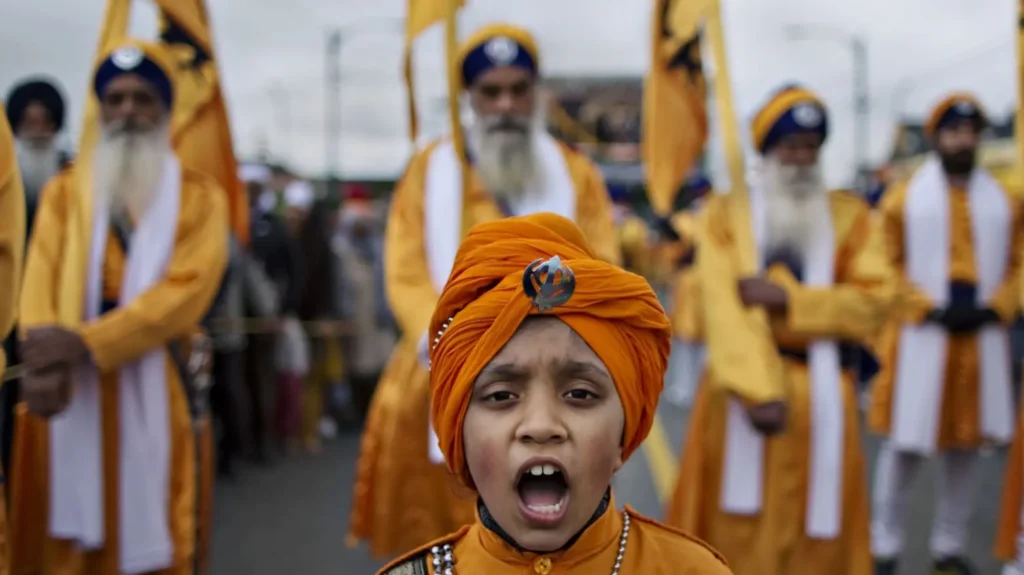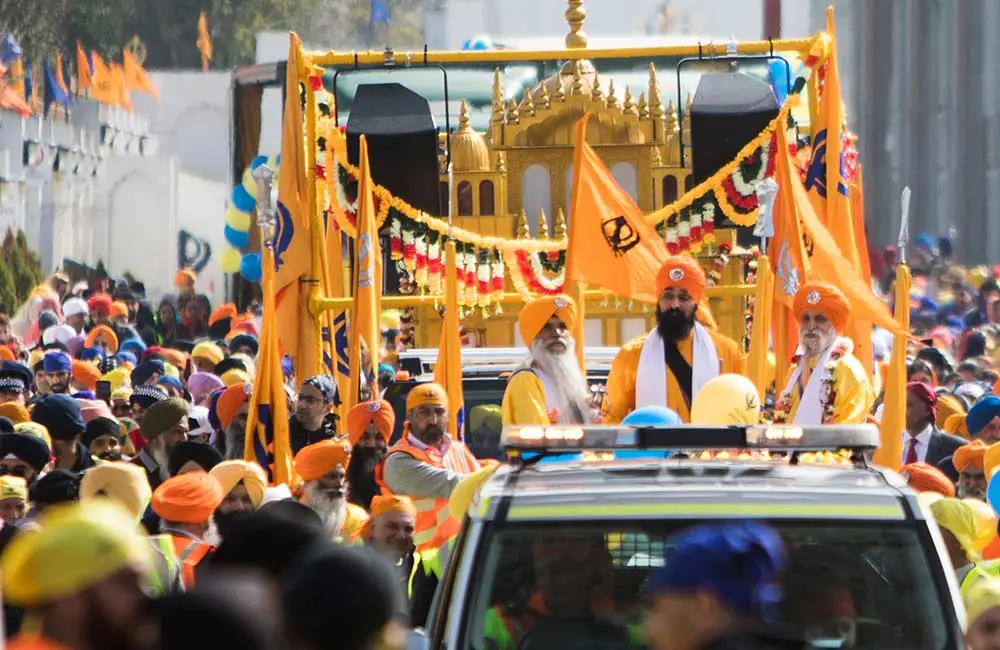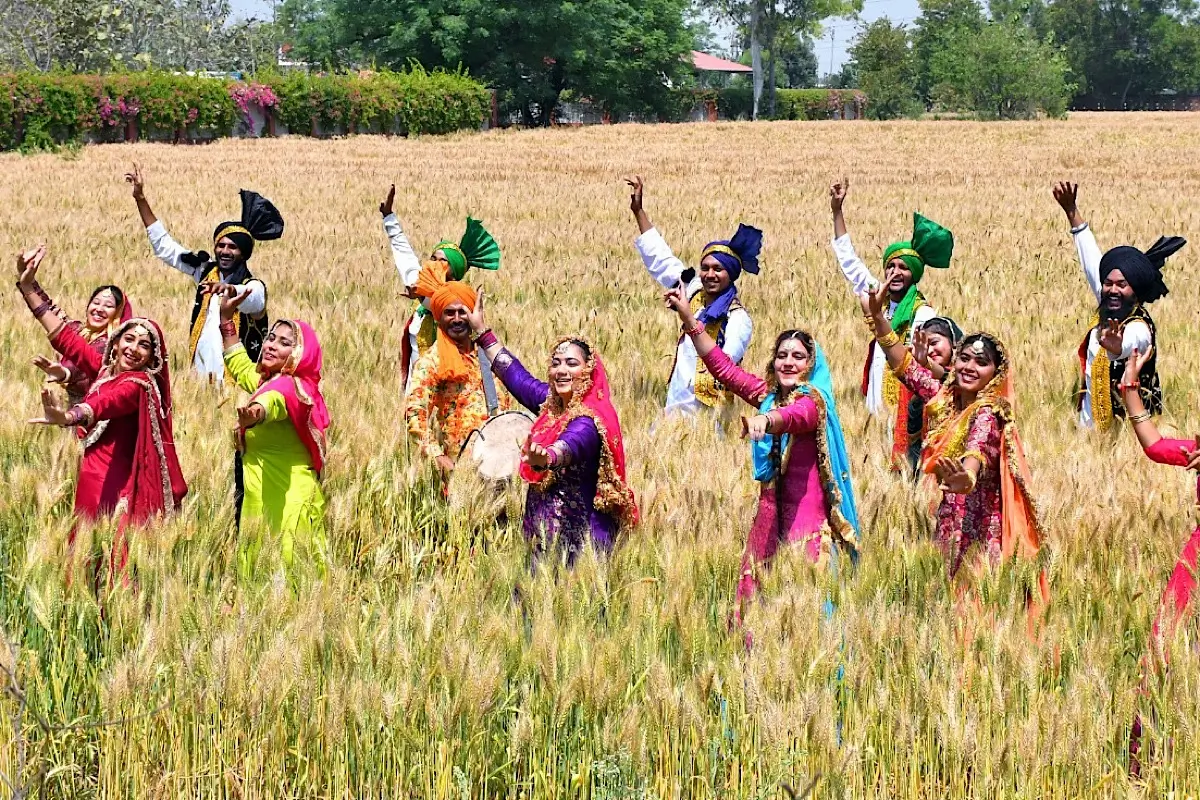Get ready to immerse yourself in the vibrant and joyous festivities of Vaisakhi 2024! This grand celebration, deeply rooted in Punjabi culture, marks the start of the harvest season and the birth of the Khalsa community. It is a time of reverence, gratitude, and cultural pride.
Vaisakhi is a fusion of ancient harvest rituals and religious traditions, creating a unique tapestry of color, music, and devotion. The streets come alive with processions, where participants showcase their elaborate traditional attire and perform energetic Bhangra dances. The beating of drums and the infectious sounds of folk music fill the air, as families and friends come together to share delicious Punjabi cuisine.
As we commemorate this auspicious occasion, we also pay homage to the significance of Vaisakhi in Sikh history. It was on this day in 1699 when Guru Gobind Singh Ji established the Khalsa, a collective of devoted individuals who embody the highest ideals of Sikhism.
Join us as we delve into the rich traditions and customs of Vaisakhi, celebrating the bountiful harvest and embracing the spirit of unity and diversity. Let us come together and experience the magic of this joyous festival that speaks to the heart of Punjabi heritage.

History and Significance of Vaisakhi
Vaisakhi holds great historical and cultural significance for the Sikh community. The origins of this festival can be traced back to ancient times when it was celebrated as a harvest festival in the Punjab region. However, in 1699, Vaisakhi took on a new meaning as Guru Gobind Singh Ji chose this day to establish the Khalsa, a community of Sikhs who would embody the principles of Sikhism and stand up against injustice.
The establishment of the Khalsa marked a turning point in Sikh history and symbolized the birth of a new spiritual order. Guru Gobind Singh Ji initiated the first five members of the Khalsa by baptizing them with Amrit, a sacred nectar. This act not only unified the Sikh community but also instilled in them a sense of courage, selflessness, and commitment to justice. Since then, Vaisakhi has been celebrated as a day of remembrance and gratitude for the sacrifices made by the Sikh Gurus and their followers.
Vaisakhi is not only important for Sikhs but also holds significance for Hindus and Buddhists. For Hindus, Vaisakhi marks the beginning of the solar new year and is associated with the harvest of Rabi crops. It is also believed to be the day when Goddess Ganga descended to earth. Similarly, Buddhists celebrate Vaisakhi as Vesak or Buddha Purnima, commemorating the birth, enlightenment, and death of Lord Buddha.
Vaisakhi Celebrations Around the World
Vaisakhi is celebrated with great enthusiasm by Sikhs and Punjabi communities worldwide. From the bustling streets of Punjab to the vibrant neighborhoods of London and Vancouver, Vaisakhi festivities bring people together to celebrate their shared heritage.
In India, the state of Punjab becomes a hub of activity during Vaisakhi. The holiest Sikh shrine, the Golden Temple in Amritsar, is beautifully adorned and attracts thousands of devotees who come to seek blessings. Processions known as Nagar Kirtans are held, where devotees march through the streets singing devotional hymns and carrying the Guru Granth Sahib, the holy scripture of Sikhism.
Outside of India, cities with significant Sikh populations such as London, Vancouver, and Toronto also hold grand Vaisakhi celebrations. These events feature colorful processions, live music performances, traditional dances, and delicious food stalls. It’s a time for Sikhs and Punjabis to come together, reconnect with their roots, and share their traditions with the wider community.
Traditional Rituals and Customs of Vaisakhi
Vaisakhi is a time of rich traditions and customs that are deeply ingrained in Punjabi culture. One of the most important rituals is the preparation and offering of Karah Prasad, a sweet semolina-based dish that is distributed among the attendees. This Prasad is considered blessed and is believed to bring good luck and prosperity.
Another significant ritual is the Akhand Path, a continuous reading of the Guru Granth Sahib that lasts for 48 hours. Devotees take turns reading the sacred text, ensuring that there is no interruption. The Akhand Path is a time of reflection, prayer, and spiritual rejuvenation.
One of the most visually captivating customs of Vaisakhi is the display of traditional attire. Men don colorful turbans and embroidered kurtas, while women adorn themselves with vibrant phulkari dupattas and intricately designed suits. These traditional garments not only showcase the beauty of Punjabi culture but also serve as a symbol of identity and pride.
Fusion of Harvest and Heritage in Vaisakhi Celebrations
Vaisakhi is a celebration that beautifully combines the themes of harvest and heritage. The festival marks the arrival of the harvest season, a time when farmers reap the fruits of their year-long labor. It is a time of gratitude for the abundance of nature and a reminder of the importance of sustainable farming practices.
In addition to the harvest aspect, Vaisakhi is deeply rooted in Punjabi heritage. The festival provides an opportunity for the community to come together and celebrate their shared traditions, language, music, and cuisine. It is a time to honor the rich cultural heritage of Punjab and pass it on to future generations.
The fusion of harvest and heritage is evident in the vibrant decorations that adorn Vaisakhi celebrations. Colorful banners, flowers, and lights transform the streets into a visual spectacle. The use of traditional motifs and symbols further enhances the festive atmosphere, creating a sense of unity and joy among the participants on hometogel.

Vaisakhi Decorations and Traditional Attire
When it comes to Vaisakhi decorations, creativity knows no bounds. The streets and homes are adorned with vibrant colors, with each decoration telling a story of Punjabi culture and history. From intricate Rangoli patterns made with colored powders to handcrafted paper flowers, every element adds to the festive ambiance.
Traditional attire plays a significant role in Vaisakhi celebrations. Men don colorful turbans, representing their pride and valor. The turban holds immense cultural and religious significance for Sikh men and is a symbol of honor and dignity. Women, on the other hand, grace the occasion with their elegant and vibrant Phulkari dupattas, intricately embroidered suits, and traditional jewelry. The attire not only adds to the visual appeal but also serves as a way to keep the rich Punjabi heritage alive.
Vaisakhi Food and Delicacies
No celebration is complete without delicious food, and Vaisakhi is no exception. Punjabi cuisine is renowned for its rich flavors and hearty dishes, and Vaisakhi is the perfect time to indulge in these culinary delights.
One of the most popular dishes prepared during Vaisakhi is Langar, a community meal that is served in Gurudwaras (Sikh temples) and community centers. Langar is a symbol of equality and inclusivity, where everyone, regardless of their background, can sit together and enjoy a wholesome meal.
Apart from Langar, traditional Punjabi dishes such as Sarson Ka Saag (mustard greens curry), Makki Ki Roti (cornbread), and Chole Bhature (chickpea curry with fried bread) are also prepared during Vaisakhi. These dishes showcase the richness of Punjabi cuisine and are enjoyed by people of all ages.
Vaisakhi Music and Dance Performances
Music and dance are integral parts of Vaisakhi celebrations, adding rhythm and joy to the festivities. The vibrant beats of the dhol (drum) and the melodious tunes of the harmonium resonate through the streets, creating an atmosphere of celebration and unity.
One of the most popular dance forms performed during Vaisakhi is Bhangra. This energetic and lively dance involves high-energy movements, synchronized footwork, and vibrant costumes. Bhangra performances are a treat for the eyes and showcase the exuberance and spirit of Punjabi culture.
Giddha, a traditional Punjabi dance performed by women, is another highlight of Vaisakhi celebrations. It is characterized by graceful movements, rhythmic clapping, and vibrant attire. Giddha is not only a form of entertainment but also a way for women to express their joy and celebrate their identity.
Vaisakhi Activities for the Whole Family
Vaisakhi is a family-oriented festival that offers a range of activities for people of all ages. From storytelling sessions and art workshops for children to cultural exhibitions and musical performances for adults, there is something for everyone to enjoy.
Families can come together to participate in traditional games such as Kabaddi (a contact sport) and Kite Flying. These activities foster a sense of camaraderie and friendly competition while keeping the cultural traditions alive.
For those seeking a spiritual experience, attending Kirtan (devotional singing) and participating in the Ardas (prayer) at the Gurudwara can provide a sense of peace and tranquility. It is a time for introspection, gratitude, and connecting with the divine.
Conclusion and Wishes for a Joyful Vaisakhi Celebration
As we conclude this exploration of Vaisakhi and its significance, we extend our warmest wishes for a joyful and prosperous Vaisakhi celebration. May this festival bring love, unity, and happiness to your life, and may the spirit of Vaisakhi inspire you to embrace your heritage and spread positivity in the world.
Let us come together as a global community to celebrate the fusion of harvest and heritage, paying homage to the traditions of the past while embracing the opportunities of the future. Happy Vaisakhi!
Also read: SUKIYAKI SENSATIONS: SAVORING THE ULTIMATE SYMPHONY OF JAPANESE FLAVORS





